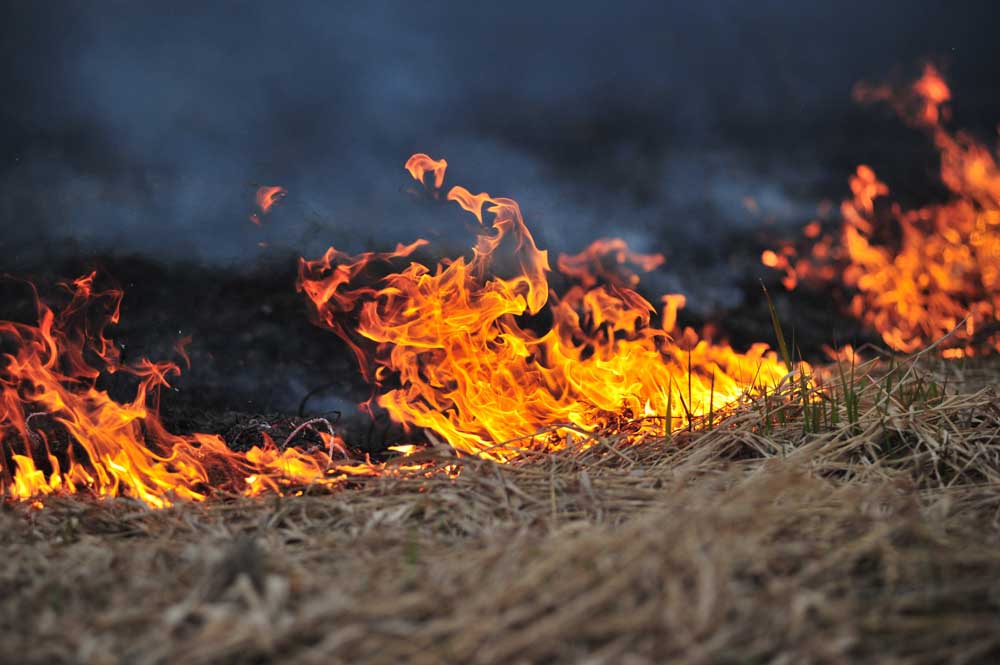Gardening corner: Time to consider pruning fruit trees, with care
Published 4:00 am Sunday, February 18, 2024

- Liz Douville
If you squint your eyes real tight and look at a grove of deciduous trees you are likely to see just a slight casting of green. I did and there is. Looking at the calendar you realize daylight saving time is just a month away.
An early deadline gardeners should keep in mind is the best time to prune fruit trees is from December-March. Planting fruit trees in Central Oregon becomes more popular every year. The challenge is selecting the varieties that do well in Central Oregon.
The Oregon State University paper, “Selecting Fruit Tree Varieties for Central Oregon Landscaping and Home Orchards, EC 1622,” is a reliable resource for making decisions. Fruit tree varieties include apple, Asian pear, European pear, plus information on peaches, nectarines and plums. Along with enjoying and sharing the fruits of your labor comes the responsibility of pruning at the correct time.
Cutting into sap dicey
Why would you prune fruit trees at this time of year? Sap is the lifeblood of a plant, if you make a cut when the sap is coursing through the branch of a tree you are essentially opening a wound. The wound keeps bleeding and sucks the life out of the branch or possibly the entire plant. The flow of the sap can be the cause of many problems.
The sweet nectar is often irresistible to animals and birds. Insects can also be drawn in and they may be carrying pathogens that introduce disease. When the sap starts to dry it has a tendency to mold which may also cause diseases.
Recommendations have been made to make a small cut to find out if the sap is flowing. It is no longer recommended to seal the cut branches with commercial products or paint.
If you have read a book or directions on pruning you might feel like it was written in a foreign language. Here are some of the most common terms to familiarize yourself with before you take on the project.
Terms of pruning
APICAL BUD: The bud that produces new growth, typically at the tip of a branch; also known as the dominant or terminal bud
AUXIN: A growth hormone found in apical buds that promotes cell division (new growth) and inhibits any lower buds from growing
LATENT BUD: Any bud-typically below the apical bud-that remains dormant or underdeveloped for a long time but may eventually grow
LATERAL BRANCH: Any branch or minor stem that grows off the leader
LEADER: The main or dominant stem of a plant
MAIN SIDE BRANCH: A large lateral branch that is usually only slightly smaller in diameter than the leader.
Tools of the trade
Along with following recommended techniques, choosing the right tool for the job is important. Bleach and rubbing alcohol should be a part of your garden supplies. A 5% bleach-to-water mixture should be used each time you finish a day in the garden to disinfect your tools. Rubbing alcohol is best for cleaning pitch and gum off of tools.
A pruning saw is preferred over lopping shears. The pruning saw makes a cleaner cut. The saw should be used when a branch is too big for a hand pruner. Some brands come with interchangeable blades, no need to buy a new saw if the blade does break.
Lopping shears are good when used to demolish an entire plant before removing it completely. Shears have a tendency to bruise plants when used for branch pruning.
A pole pruner is used for pruning small branches that are above your head-while you’re standing on the ground. Some brands have a cut and hold feature so you can control where the branch falls.
Hand pruners are the tool you will probably use the most during the season. Make sure the branch fits between the blades. If it doesn’t, use the pruning saw. It is also important that pruners be kept sharp.
A word of warning: If you prune early blooming plants in the spring, you will be removing the flower buds. Lilac and forsythia are two examples. Generally those plants are pruned right after blooming. Practice good safety measures—safety glasses or goggles are a must. Gloves are a good idea as well.
Days are passing quickly. Lotteries for the Community Gardens will be opening soon. For more information contact the OSU Extension office at 541-548-6088.
Resource for Central Oregon Fruit Trees, www.catalog.extension.oregonstate.edu/ec1622








